Quintana Roo is a state in southeastern Mexico that is well-known for its dazzling beaches, rich cultural heritage, and abundant wildlife. One of the most fascinating aspects of its natural heritage is its vibrant birdlife.
From tropical forests to coastal areas, the region is home to a diverse range of bird species. Whether you are an avid birdwatcher or a casual observer, the colorful and lively birds of Quintana Roo are sure to captivate your attention.
In this article, we will explore some of the incredible birds that can be found in this stunning state, and learn more about their unique characteristics and habitats. So, if you are ready to discover the avian world of Quintana Roo, let’s begin.
1. Tropical Mockingbird
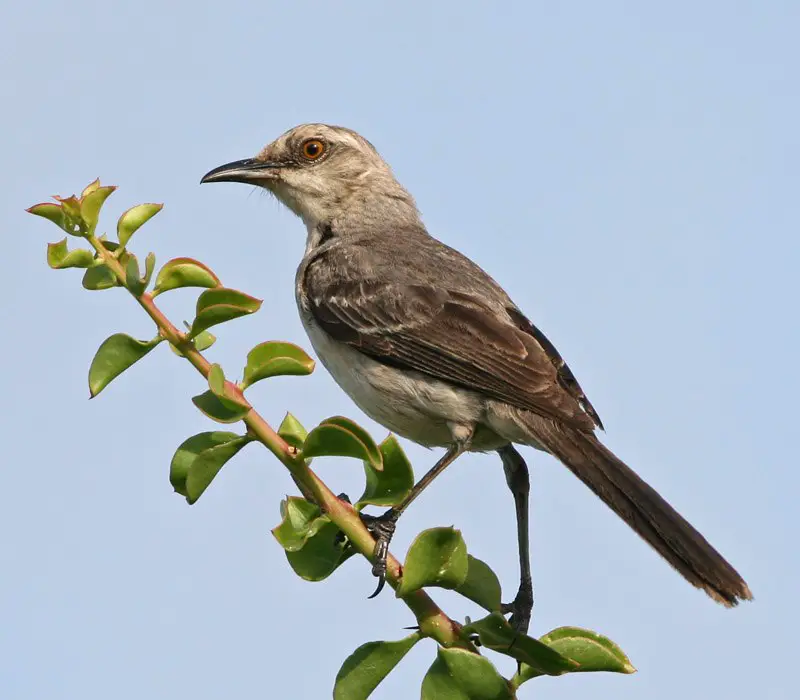
The Tropical mockingbird is a species of bird found throughout Central America and the Caribbean. It has been classified as a resident breeding bird, with its range stretching from southern Mexico to northern and eastern South America.
This species is closely related to the Northern Mockingbird, forming what is known as a superspecies between them both.
The Tropical mockingbird can be recognized by its grey-brown coloration on top, blending into white underparts which are highlighted by black spots along their throat and wings.
They have long legs for perching in trees or shrubs while searching for prey such as insects before singing out melodic songs during territorial disputes with other birds in the area.
Sadly, one subspecies -the San Cristobal Mockingbird – has been listed as critically endangered due to habitat destruction caused by human activities including logging within their natural environment.Scientific classification:
| Kingdom | Animalia |
| Phylum | Chordata |
| Class | Aves |
| Order | Passeriformes |
| Family | Mimidae |
| Genus | Mimus |
| Species | M. gilvus |
Also Featured In: Common Birds in Colombia, Most Common Birds in South America Birds
2. Yucatan Woodpecker
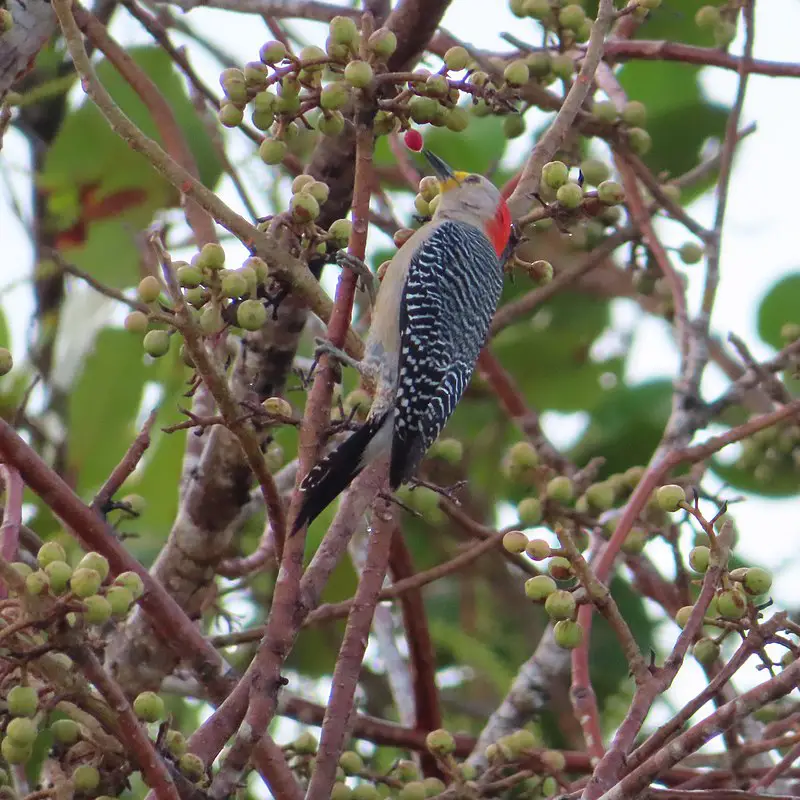
The Yucatan woodpecker is a species of bird in the family Picidae, commonly referred to as the red-vented woodpecker. It can be found from Belize and Mexico across the entire Yucatán Peninsula.
Its natural habitats are subtropical or tropical dry forests, shrubland, and even heavily degraded former forest areas.
Adults typically have a black back with white barring on both sides of their wings; they also possess a distinctive crimson patch at their lower belly area which gives them their “red-vented” name.
They mainly feed off insects that inhabit dead trees but may also eat fruits during different times of year when available.
The Yucatan Woodpecker has an important role in its ecosystem by helping disperse seeds through propagating fruit plants while searching for food sources within tree trunks – this helps maintain healthy populations of native vegetation throughout its range.Scientific classification:
| Kingdom | Animalia |
| Phylum | Chordata |
| Class | Aves |
| Order | Piciformes |
| Family | Picidae |
| Genus | Melanerpes |
| Species | M. pygmaeus |
Also Featured In: Most Beautiful Birds in Guatemala, Cozumel Birds You Didn’t Know
3. Yucatan Nightjar
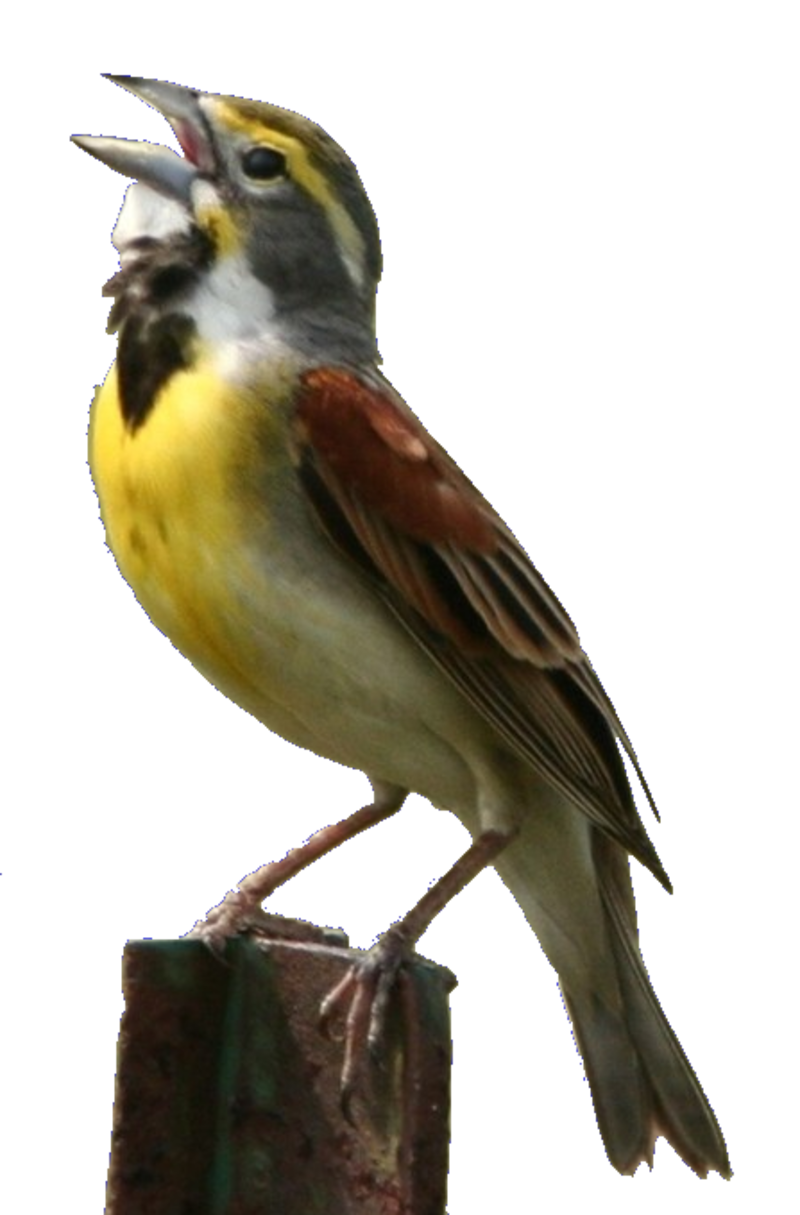
The Yucatan nightjar is a species of bird belonging to the family Caprimulgidae. It is found in Belize, Guatemala, Mexico and Honduras. This nocturnal bird has distinct brownish-black plumage with light streaks on its wings and tail feathers.
Its call consists of a series of distinctive chirps that can be heard during nighttime hours. These birds feed mainly on insects but will also take small reptiles or amphibians if the opportunity presents itself.
They are most active at dusk when they come out to hunt for food as well as socialize with other members of their species before returning back to their roosts shortly after dawn breaks.
The Yucatan nightjar’s population numbers have been decreasing due to habitat destruction caused by human activities such as deforestation and agricultural expansion which has lead it being listed as Near Threatened according IUCN Red List criteria assessment from 2018 onwardsScientific classification:
| Kingdom | Animalia |
| Phylum | Chordata |
| Class | Aves |
| Order | Caprimulgiformes |
| Family | Caprimulgidae |
| Genus | Antrostomus |
| Species | A. badius |
Also Featured In: Birds of Honduras,
4. Bare-Throated Tiger Heron
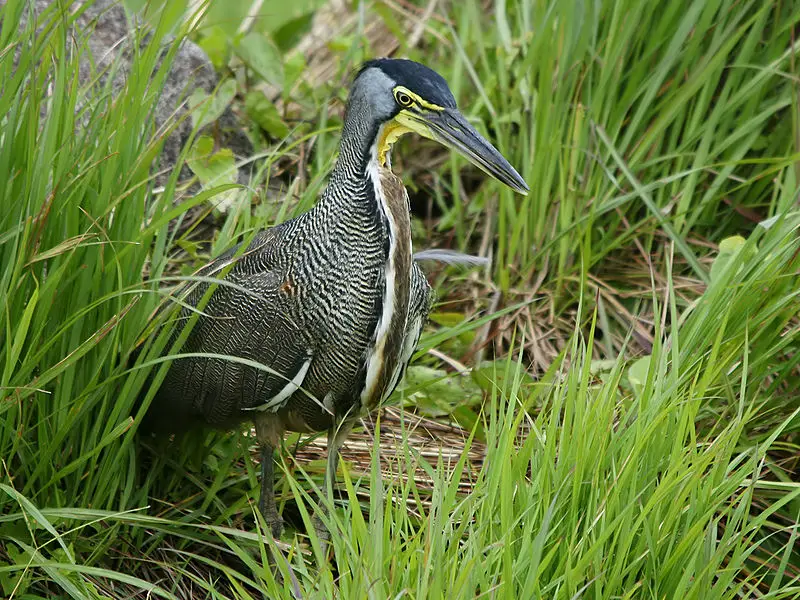
The Bare-throated Tiger Heron is an impressive wading bird belonging to the heron family, Ardeidae.
It has a length of 80 cm and weighs 1,200 grams. Found from Mexico to northwestern Colombia with one recorded sighting from the United States in Texas, it prefers more open habitats such as river and lake banks than other Tigrisoma herons.
Its plumage is blackish above with white spots on its back while its lower parts are chestnut brown or rufous in coloration.
The head and throat have bare yellow skin that can turn bright red when alarmed or during courtship displays.
Additionally, these birds feed mainly on fish but also eat amphibians, reptiles and aquatic insects which they capture by standing still before suddenly snatching them up.Scientific classification:
| Kingdom | Animalia |
| Phylum | Chordata |
| Class | Aves |
| Order | Pelecaniformes |
| Family | Ardeidae |
| Genus | Tigrisoma |
| Species | T. mexicanum |
Also Featured In: Colorful Birds of Nicaragua, Puerto Vallarta Birds You Should Know
5. Yellow-Backed Oriole
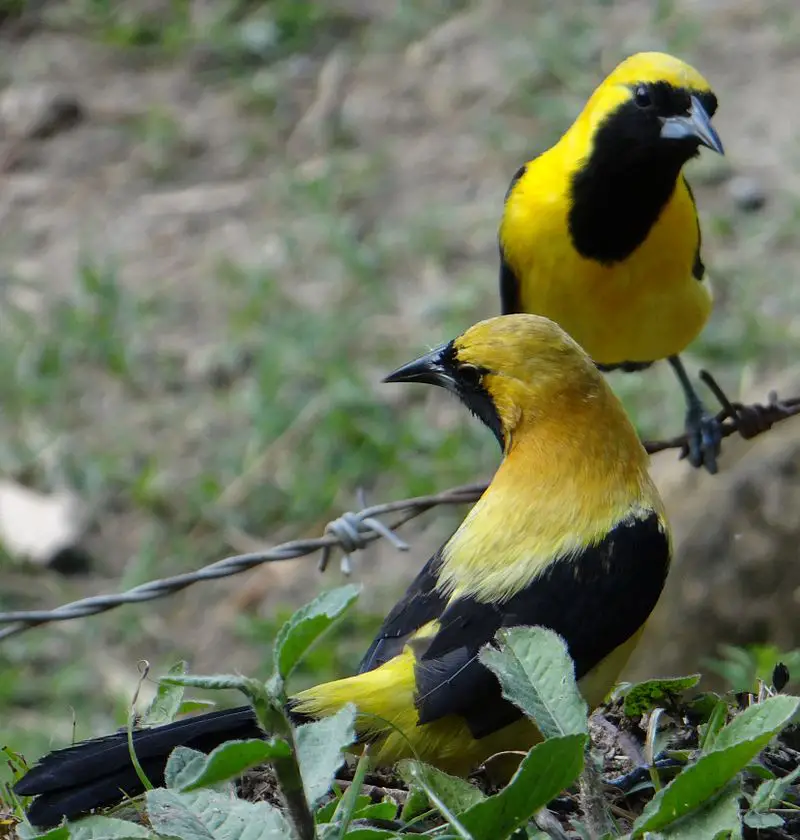
The Yellow-backed Oriole is a species of bird found in the Icteridae family. It has a yellow body and black bill, with its mandible base turning bluish grey when mature.
This medium sized oriole typically measures around 21.5 cm (8.5 inches) long from beak to tail and also features exposed skin and claws that are an intense blue-black colouring.
They tend to inhabit tropical regions such as Central America, Mexico, Costa Rica, Belize and Guatemala but can occasionally be spotted further north during migration season in Canada or even Texas.
These birds usually travel alone or in pairs so they don’t form large flocks like other species of orioles do.
However they have been known to gather together at certain times for feeding grounds or nesting sites before heading off on their own again shortly afterwards.Scientific classification:
| Kingdom | Animalia |
| Phylum | Chordata |
| Class | Aves |
| Order | Passeriformes |
| Family | Icteridae |
| Genus | Icterus |
| Species | I. chrysater |
Also Featured In: Yellow Birds that Live in Yucatan,
6. Wood Stork
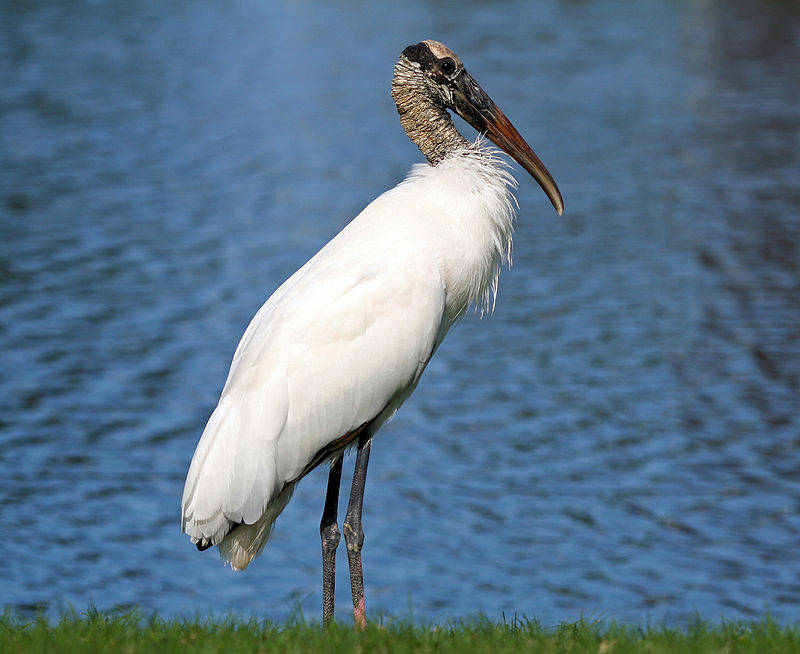
The Wood Stork is a large wading bird found in subtropical and tropical habitats throughout the Americas, including the Caribbean. It stands out from other storks due to its distinctive white head and neck feathers.
The wood stork has an impressive wingspan of up to 6 feet wide, making it one of the largest birds in North America.
Although usually seen near water sources such as swamps or wetlands looking for food like fish, crabs, frogs and even small reptiles they can sometimes be spotted far away from their natural habitat during migration season.
This species is also one of few that breeds annually in North America with nests typically built on platforms made by humans or animals near water bodies or ponds.Scientific classification:
| Kingdom | Animalia |
| Phylum | Chordata |
| Class | Aves |
| Order | Ciconiiformes |
| Family | Ciconiidae |
| Genus | Mycteria |
| Species | M. americana |
Also Featured In: Georgia Birds, Birds You’ll Find in South Texas
7. Yucatan Vireo
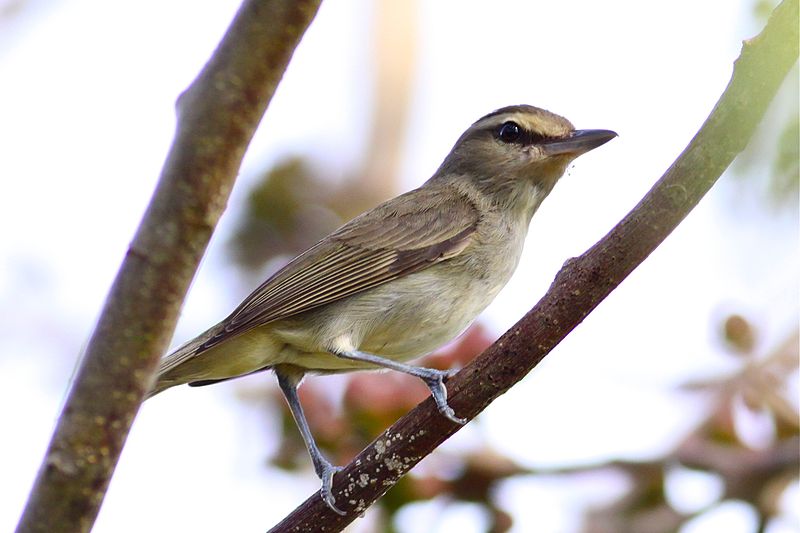
The Yucatan vireo is a species of bird belonging to the family Vireonidae. It has an overall dull plumage and measures 14.5–15.5 cm (5.7–6.1 in).
Its bill is stout, hooked and grayish with paler base, while its crown is dull gray with white eyebrow above it’s brown eyes adorned by broad dark stripe running through them .
The upperparts are olive-gray in color whereas throat and breast show yellowish wash that gradually fades off towards belly which appears somewhat pale grey or whitish in colouring along with undertail coverts being tinged grey on edges.
This species tends to inhabit moist forested areas as well as scrubland making short flights between perches though they also occasionally join flocks during migration season.Scientific classification:
| Kingdom | Animalia |
| Phylum | Chordata |
| Class | Aves |
| Order | Passeriformes |
| Family | Vireonidae |
| Genus | Vireo |
| Species | V. magister |
Also Featured In: Cayman Islands birds, Beautiful Birds Found in Grand Cayman
8. Yucatan Jay
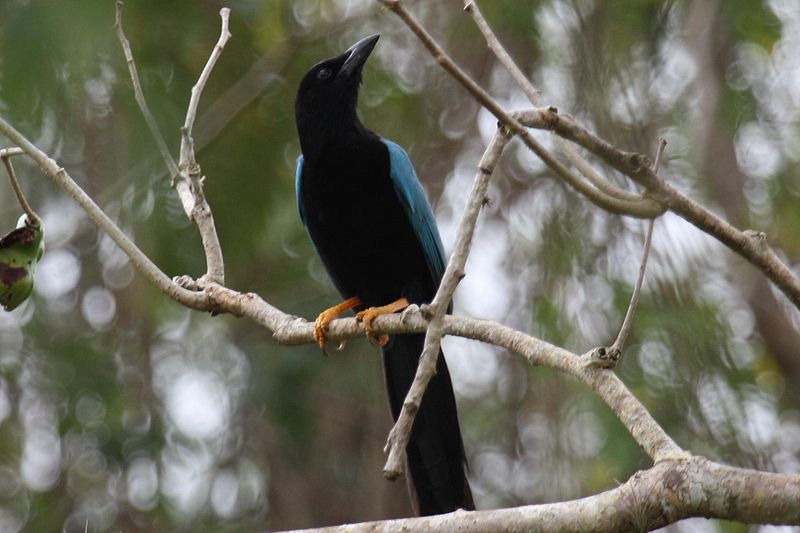
The Yucatan jay, a member of the Corvidae family, is found in the Yucatán Peninsula’s subtropical or tropical dry forests, plantations, and cleared areas at elevations of up to 820 ft.
Adults have black bodies with blue wings, mantle, and tail, black bills, yellow eye rings, and legs, and grow to about 12 inches in length. The Yucatan jay is a unique and fascinating bird that is well-adapted to its environment.
With its bright coloration and sharp beak, it is a master of foraging and hunting. It is also a social bird, often seen in small groups or pairs.
Despite its name, the Yucatan jay is not found only in the Yucatán Peninsula but across several regions of Central America.
It is an integral part of the local ecosystem, contributing to seed dispersal and pest control. The Yucatan jay’s conservation status is of Least Concern, but its habitat is threatened by deforestation and climate change.Scientific classification:
| Kingdom | Animalia |
| Phylum | Chordata |
| Class | Aves |
| Order | Passeriformes |
| Family | Corvidae |
| Genus | Cyanocorax |
| Species | C. yucatanicus |
9. Yellow-Green Vireo
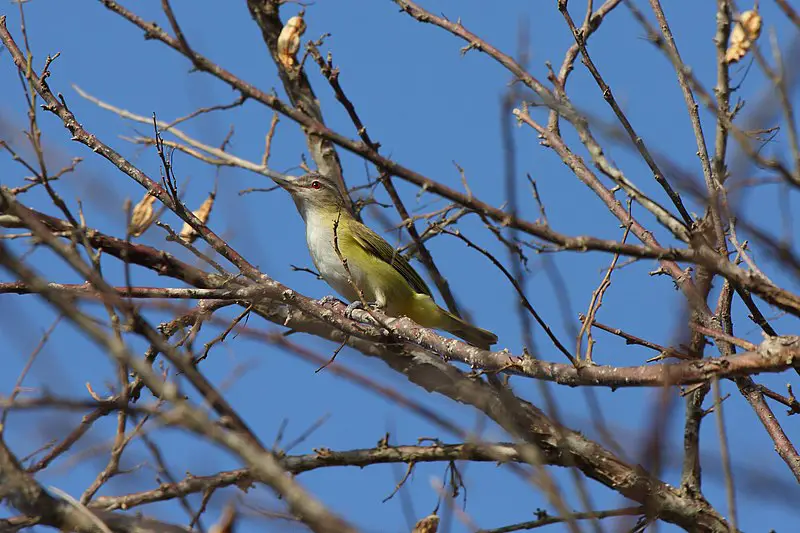
The Yellow-green vireo is a migratory passerine bird found in North and South America. It breeds in areas from Mexico to Panama and winters in the western Amazon Basin and northern and eastern Andes.
It was first described by American ornithologist John Cassin in 1851. The bird is small in size and has yellow-green plumage.
Its specific epithet, flavoviridis, is derived from the Latin words flavus (yellow) and viridis (green), which describe the bird’s coloration.
The Yellow-green vireo is known for its melodious song, and its diet mainly comprises insects and berries.
This species of vireo is a remarkable bird, and its migration patterns make it an interesting subject for bird enthusiasts to observe and study.Scientific classification:
| Kingdom | Animalia |
| Phylum | Chordata |
| Class | Aves |
| Order | Passeriformes |
| Family | Vireonidae |
| Genus | Vireo |
| Species | V. flavoviridis |
Also Featured In: Green Birds in That Live in Texas, Birds that Live in Jalisco Birds
10. Cozumel Vireo
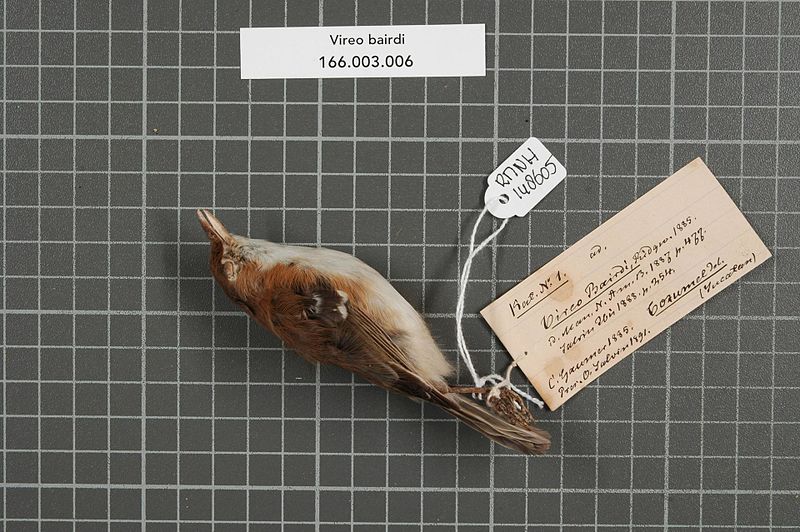
The Cozumel vireo is a unique bird found only on the Mexican island of Cozumel. It belongs to the family Vireonidae and inhabits subtropical or tropical dry forests that have suffered heavy degradation.
This species is not found anywhere else, and its existence depends on the conservation of its habitat. It is a small bird with distinctive markings, making it easy to identify in the wild.
Despite being endemic to Cozumel, the Cozumel vireo faces threats such as deforestation and the loss of its natural habitat.
It is important to preserve the forest ecosystems in which this species thrives to ensure its survival.
The Cozumel vireo is a reminder of the unique biodiversity that exists on the island of Cozumel and the importance of protecting of such species.Scientific classification:
| Kingdom | Animalia |
| Phylum | Chordata |
| Class | Aves |
| Order | Passeriformes |
| Family | Vireonidae |
| Genus | Vireo |
| Species | V. bairdi |
11. Rose-Throated Becard
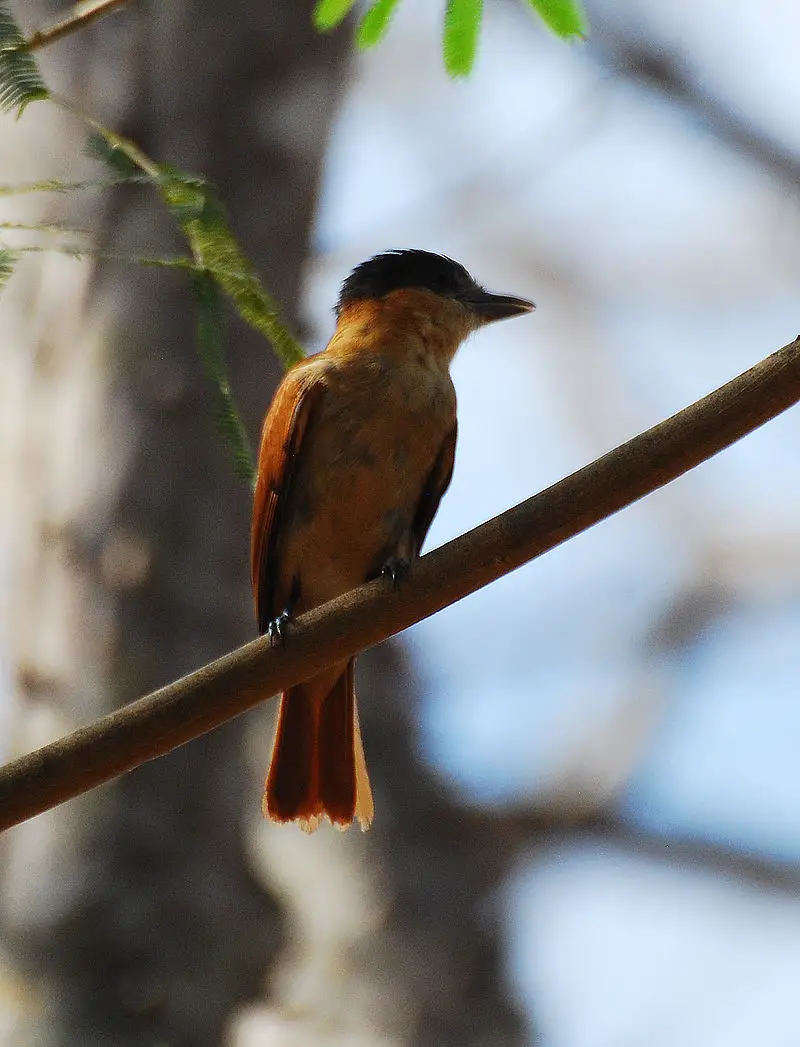
The rose-throated becard is a medium-sized bird belonging to the Tityridae family. Its scientific name is Pachyramphus aglaiae, and it was named after Aglaé Brelay.
Taxonomists have debated the classification of this bird for a long time, with many suggesting that it belongs in the Cotingidae or Tyrannidae family. However, recent evidence strongly supports its placement in the Tityridae family.
The rose-throated becard is known for its distinctive rose-colored throat and is a beautiful addition to the avian world. As a medium-sized bird, it is neither too big nor too small, making it easy to observe in its natural habitat.
Given its unique physical characteristics and status as a member of the Tityridae family, the rose-throated becard is an important bird for both birdwatchers and researchers to study.Scientific classification:
| Kingdom | Animalia |
| Phylum | Chordata |
| Class | Aves |
| Order | Passeriformes |
| Family | Tityridae |
| Genus | Pachyramphus |
| Species | P. aglaiae |
Also Featured In: Most Common Oaxaca Birds,
12. Rufous-Necked Wood Rail
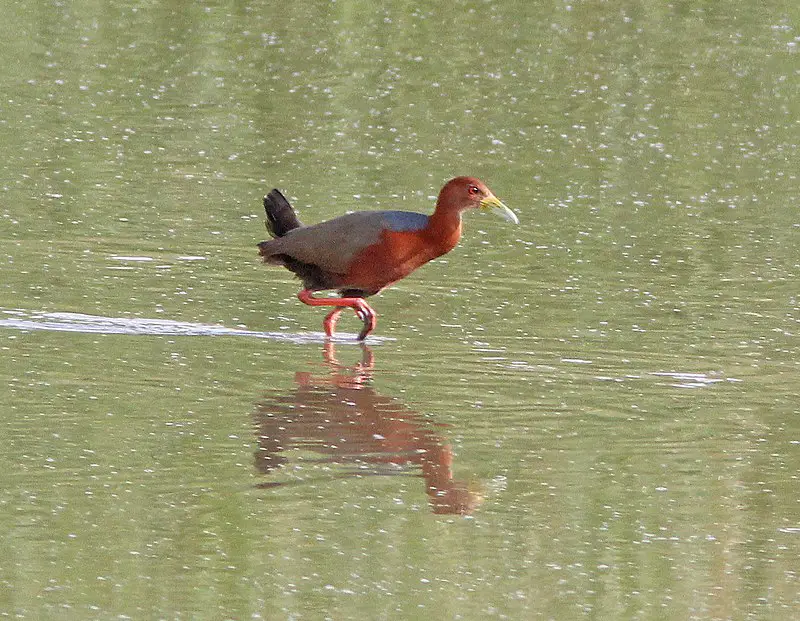
The Rufous-necked wood rail is a bird species found in Mexico, Central America, mainland South America, and Trinidad.
It belongs to the Rallidae family and is the only member in the monotypic subfamily Rallinae.
This bird measures 29 to 33 cm in length and weighs around 300 to 325 g. Its plumage is mostly brown with a rufous neck, and it has a long, curved bill.
The Rufous-necked wood rail prefers dense habitats and can be found in forest undergrowth or near water sources.
It is known for its loud and distinctive call that sounds like a series of repeated whistles.
Despite being widespread, this bird is not commonly seen due to its elusive nature and preference for dense vegetation.
The Rufous-necked wood rail is an important indicator species for the conservation of wetland habitats.Scientific classification:
| Kingdom | Animalia |
| Phylum | Chordata |
| Class | Aves |
| Order | Gruiformes |
| Family | Rallidae |
| Genus | Aramides |
| Species | A. axillaris |
13. Streaked Flycatcher
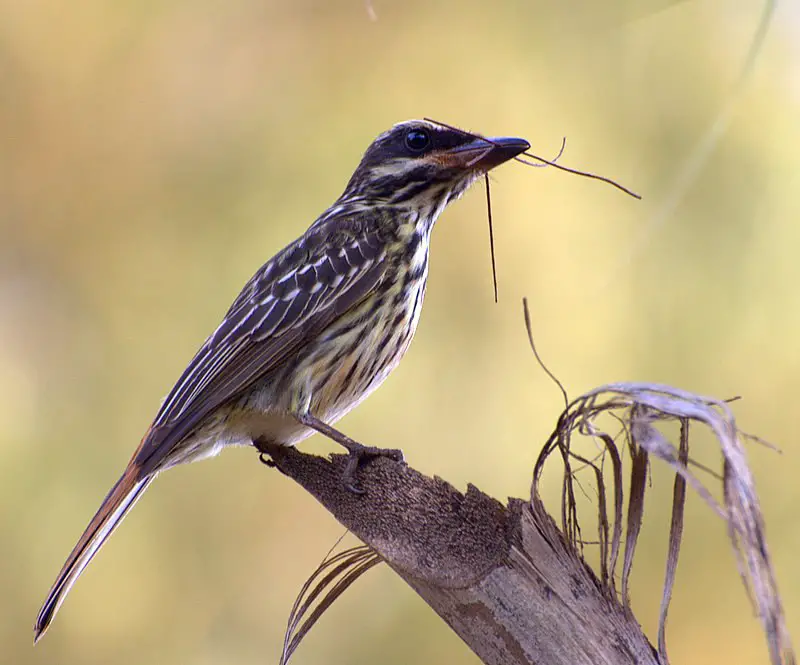
The streaked flycatcher is a member of the tyrant flycatcher family, measuring around 22 cm in length and weighing 43 g.
It can be identified by its brown head with a yellow crown patch, white supercilium, and dusky eye mask.
The bird’s upper body is brown with streaks on the back, and its wings have rufous and white edges. Its bill is strong and black.
The streaked flycatcher is a passerine bird and has a unique vocalization that includes a whistle followed by trills.
These birds are commonly found in open woodland areas in Central and South America, and they feed on insects by catching them while in flight.
Despite being fairly common throughout their range, populations of the species can be affected by habitat loss and fragmentation.Scientific classification:
| Kingdom | Animalia |
| Phylum | Chordata |
| Class | Aves |
| Order | Passeriformes |
| Family | Tyrannidae |
| Genus | Myiodynastes |
| Species | M. maculatus |